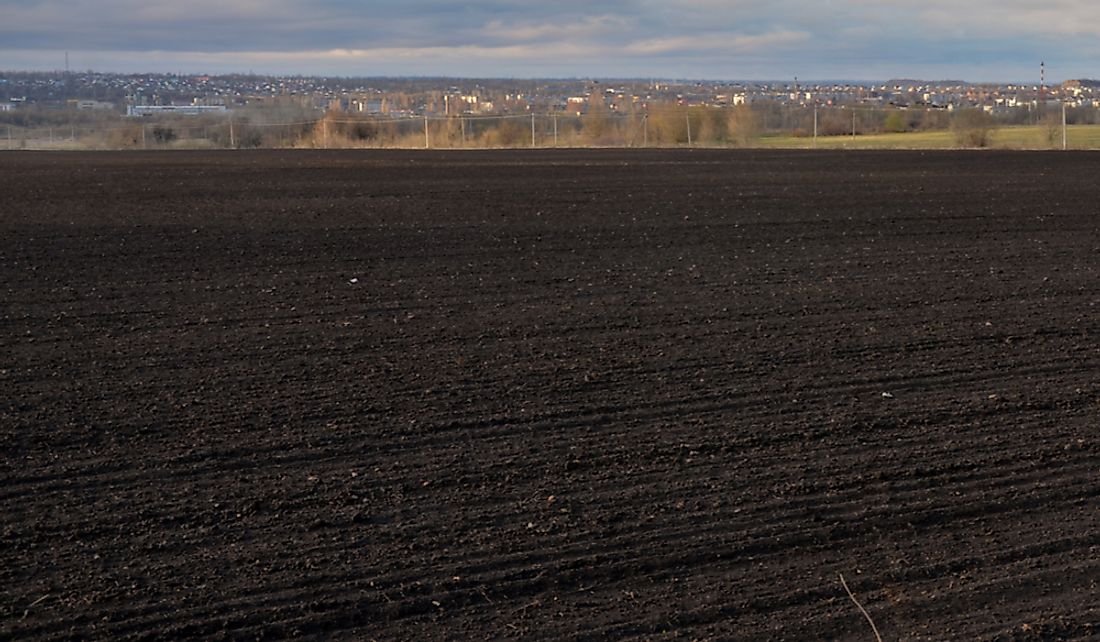What Is Chernozem?

Chernozem is a type of soil which is generally black with high concentrations of humus. The humus concentration in chernozem typically ranges from 4% to 16% of its total content. Chernozem also contains high quantities of ammonia and phosphoric acids. Because of the high mineral content, chernozems are considered among the most fertile soils on earth. The term chernozem was coined from two Russian terms, chernaya which means black and Zemlya which means earth. According to FAO, chernozems cover about 1.8% of the world's total land area. Chernozems are believed to be closely linked to a variety of soil known as mollisol.
Formation of Chernozems
Scientists have come up with numerous opinions on the formation of chernozems. The first theory was put forward in 1761 by Swedish mineralogist Johan Wallerius. He believed that the decomposition of plants was responsible for the formation of chernozems. In 1763, Russian scientist Mikhail Vasilyevich expanded on Johan's theory by stating that chernozems were formed from the decomposition of plants and animals. His theory was influenced by his previous work where he proved the organic origins of soil. Peter Pallas, a well-known botanist, also developed a theory on the formation of chernozems. He believed that they were formed by reed marshes. On the other hand, British geologist Roderick Murchison thought that chernozems were formed from the remains of Jurassic marine shales. During the late 19th century, Vasily Dokuchaev published a book detailing his beliefs on the origins of chernozems. After carefully studying the soils, he believed that they were formed from the interaction of various factors such as a region's climate, its vegetation, and topography.
Characteristics of Chernozems
One of the unique traits of chernozems is the fact that they can retain vast quantities of water. The high water retention capacity of chernozems is as a result of the large quantities of humus within it which reduces the size of the soil pores. Another unique feature of chernozems is that they have high quantities of carbonates in the subsoil. Chernozems also have a large concentration of metal ions particularly calcium ions.
Chernozem Belts of the World
Two areas have a large concentration of chernozem and are therefore often referred to as the Chernozem Belts. The two Chernozem Belts have a combined area of 888,034 square miles. The first belt is located in the Eurasian Steppe and encompasses territory in several countries such as Croatia, Romania, Ukraine, Russia, and Bulgaria. In Russia, the region with the highest concentration of chernozem is known as the Central Black Earth Region. The region comprises of several oblasts such as Oryol, Tambov, Kursk, and Voronezh. From 1928 to 1934, all the oblasts with a high concentration of chernozem made up the Central Black Earth Oblast. The second Chernozem Belt is located in North America. It covers the Great Plains and stretches from Manitoba, Canada to Kansas, United States. In the Red River Valley, chernozem soil can reach several inches deep.
Economic Significance of Chernozem
Chernozem plays a huge economic significance in the countries where they are found mainly because of their high fertility and therefore high yield in agricultural production. In Russia, a variety of crops are grown in the soil such as wheat and sugar beets among others.











